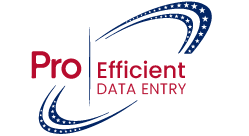
Why Manual Data Entry Still Matters in the Age of AI: A Hybrid Approach for Business Efficiency
In today’s digital economy, data is among the most valuable assets a business can possess. From customer details and financial records to inventory logs and sales data, accurate and timely information processing is critical for seamless operations and informed decision-making. While automation and AI have made significant inroads into data management, manual data entry remains indispensable—particularly for handling complex, multifaceted datasets that demand precision and contextual judgment.
This blog explores why manual data entry is still relevant, how AI enhances human efforts, and the benefits of adopting a hybrid model for optimal efficiency and data accuracy.
Why Manual Data Entry Still Matters
Manual data entry involves inputting, updating, and maintaining information in digital systems. While automation handles repetitive tasks efficiently, there are scenarios where human intervention is irreplaceable, such as:
-
- Processing handwritten or scanned documents
-
- Contextual classification and tagging
-
- Complex validation processes
-
- Error correction in unstructured datasets
Human operators excel at understanding subtle nuances, making subjective judgments, and ensuring context-aware decision-making. For these reasons, manual data entry continues to play a vital role in industries like healthcare, finance, law, and logistics.
The Limitations of Traditional Manual Data Entry
Despite its importance, manual data entry faces several challenges:
-
- Time-Intensive: Large data volumes require extensive human hours.
-
- Error-Prone: Even experienced operators are susceptible to mistakes.
-
- Costly: Labor costs rise with scale, especially for repetitive work.
-
- Scalability Issues: Quickly adapting to increased data volumes is difficult without automation.
These limitations are pushing organizations to rethink how manual data entry is implemented—and how it can be enhanced.
How AI Enhances Manual Data Entry
Artificial Intelligence is revolutionizing the way businesses handle data. By integrating AI with manual processes, businesses gain the best of both worlds. Here’s how:
1. Smart Data Extraction
AI-powered tools like Optical Character Recognition (OCR) and Natural Language Processing (NLP) can extract data from printed, handwritten, or scanned documents. Human operators then validate and correct only what’s necessary.
2. Automated Error Detection
AI systems cross-check entries against predefined rules or live databases, flagging anomalies for human review—drastically reducing human error rates.
3. Predictive Typing and Auto-Completion
Machine learning algorithms suggest entries based on past data, improving speed and accuracy for manual operators working with large datasets.
4. Managing Unstructured Data
AI can analyze customer feedback, emails, and images to categorize and structure data, simplifying tasks for human operators.
The Benefits of Combining AI and Manual Data Entry
This hybrid model delivers exceptional value:
-
- Higher Accuracy: AI reduces errors; humans provide context-sensitive oversight.
-
- Improved Efficiency: Routine tasks are automated, freeing humans for quality control.
-
- Cost Optimization: Fewer manual errors and streamlined workflows reduce labor and rework costs.
-
- Scalability: AI allows businesses to handle surges in data volume without sacrificing accuracy.
-
- Stronger Business Intelligence: Clean, reliable data enhances analytics and decision-making.
Real-World Use Cases
Healthcare
AI-assisted OCR scans medical records, while humans ensure compliance with health data regulations.
Finance
AI validates invoices and transactions, while humans handle exceptions and compliance audits.
E-Commerce
Customer orders and inventory records are categorized by AI, reviewed by humans for anomalies.
Legal
Legal documents are processed using NLP tools, with human oversight for clause recognition and interpretation.
Manufacturing
Barcode data and sensor inputs are scanned by AI; manual checks ensure accurate inventory reporting.
Best Practices for a Successful AI-Manual Hybrid Model
-
- Hire Skilled Data Entry Professionals
Trained staff who understand the domain ensure smooth collaboration with AI systems.
- Hire Skilled Data Entry Professionals
-
- Use Industry-Specific AI Tools
Choose AI tools tailored to your industry—OCR, NLP, or data validation engines.
- Use Industry-Specific AI Tools
-
- Set Quality Benchmarks
Define and monitor accuracy, turnaround times, and acceptable error margins.
- Set Quality Benchmarks
-
- Promote Continuous Improvement
Regularly retrain staff and update AI models based on new data patterns.
- Promote Continuous Improvement
-
- Ensure Privacy and Compliance
Adopt robust data security measures to comply with regulations like GDPR, HIPAA, or CCPA.
- Ensure Privacy and Compliance
Conclusion
Even in an era dominated by AI and automation, manual data entry remains crucial. When paired with smart technology, human oversight elevates data management to new levels of accuracy, speed, and scalability. The hybrid model—fusing human expertise with AI tools—not only solves traditional data entry challenges but also empowers businesses to thrive in a data-driven world.
Organizations that adopt this forward-thinking approach will benefit from reduced costs, enhanced data quality, and a sharper competitive edge.


Add a Comment